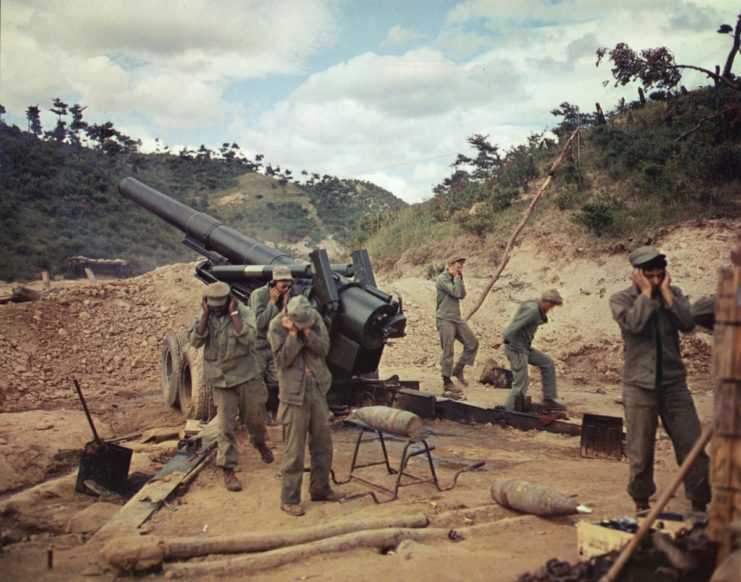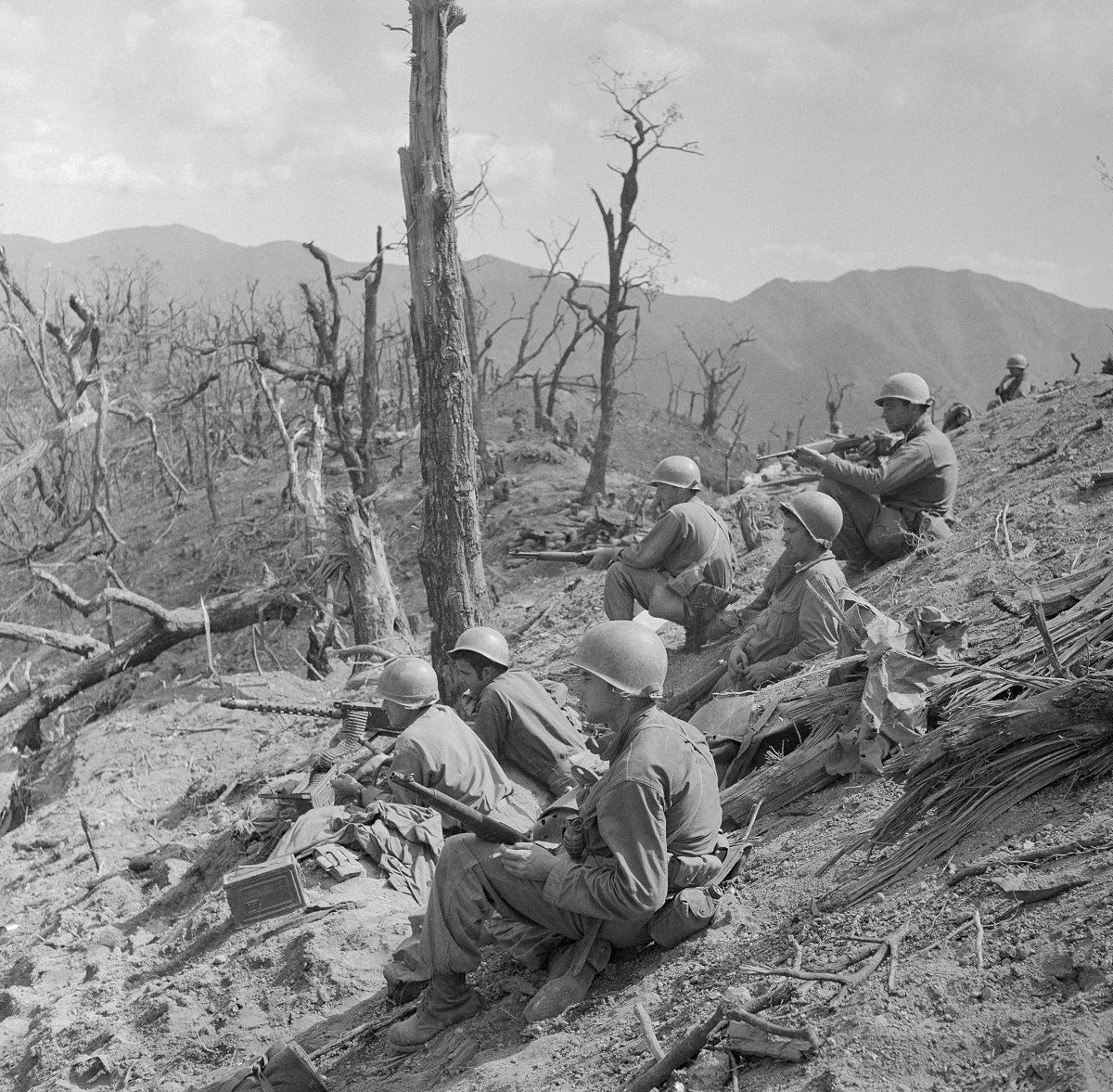The Korean War saw United Nations and North Korean forces repeatedly bounce back and forth between gaining territory and quickly losing it. UN troops were pushed back to the sea and almost lost the war, before rebounding and very nearly defeating North Korea.
North Korea was only saved by China, which came to their aid with an enormous amount of men. Eventually, the governments backing the North and South no longer wanted to fund the war, resulting in a situation where the two enemies battled to end in a better situation when the war ended.
The Battle of Bloody Ridge was part of this struggle.
Background
Korea was divided into two by the US and Soviet Union in the early days of the Cold War, with the capitalist south being led by Syngman Rhee and the communist north being led by Kim Il-sung. As such, North Korea received support from China and the Soviet Union, while South Korea was backed by the US. Both states claimed to represent Korea as a whole. In June of 1950, North Korea invaded the south.
As this was classed as an invasion, the newly formed United Nations Security Council assembled a military force of soldiers from 21 countries in a bid to control the situation.
Early in the Korean War, the US managed to make their way into the Korean peninsula, but they were battered by a string of defeats. The US and its allies were almost pushed out of the country entirely, but they held out long enough near Pusan for backup to arrive.
This backup came in the form of thousands upon thousands of US troops, equipment, vehicles, weapons, and aircraft. Soon, the UN invaded North Korea and had them on the ropes. However, before the UN could deliver the final blow China sent in an enormous number of troops and pushed them out of North Korea.
From here, the UN and communist forces battled back and forth, capturing ground only to lose it again. Seoul changed hands four times. Around a year into the conflict, the war settled down into a semi-stalemate near the 38th parallel, roughly where the north-south border was when the war started.
Both the north and the south wanted to beat the other with force, but their backers – namely China, the Soviet Union, and the United States – were no longer willing to fund such an expensive war. Aware that they probably were not going to overcome each other without this vital support, North Korea and South Korea scrambled to get into the best possible position before a ceasefire was inevitably called.
The Battle of Bloody Ridge

This scramble resulted in some of the most vicious battles of the war.
Both sides wanted to claim as much territory as possible before the conflict came to a close. Three hills near the border were highly valuable to both the north and the south. They were simply known as hills 983, 773, and 940 – after their elevation on military maps – and were held by communist forces at the time. Chinese and North Korean troops had turned the hills into a fortress of tunnels and bunkers.
America and South Korea came up with a plan to attack the position and take it for themselves. An assault would be thrown against the hills to capture them, then reserve units would reinforce the location to hold off any attacks. The hills and communist positions were hammered by a massive artillery barrage that completely wiped them of any organic life on the surface.
Hoping that the barrage would have done most of the heavy lifting, South Korean troops started their assault on August 17, 1951. It was quickly found that the Chinese and North Korean troops had endured the barrages. They sprung from their bunkers and shredded the South Korean troops with grenades and bullets.
The hills were captured after eight days of bloody fighting, only for Chinese and North Korean troops to take them back the next day. Massive amounts of Chinese troops reinforced the hills, with their leaders showing little regard for human life. The situation got so bad that US troops were sent in to help, but were also unable to make much headway. The defenders were dug in and protected by machine-gun positions and minefields.
On August 28 South Korean and US troops took a new approach to the situation and attacked across a much broader area. This tactic spread the defenders out over a wider area.
Making their way up Bloody Ridge, the US-led forces brought in every advantage possible to dig the enemy out. Flamethrowers were used to clear bunkers while hand-to-hand combat raged all around. Eventually, the hill was captured. The communist troops fell back to a position around a mile away and as a result, there were no more counter-attacks.
To take the hills, the US and South Korea suffered about 3,000 casualties, while North Korea and China suffered around 15,000.
Although Bloody Ridge had been taken, North Korean and Chinese troops were now set up on an equally formidable ridge approximately 1,500 meters away. This was to be taken next, in an even bloodier clash called the Battle of Heartbreak Ridge.
